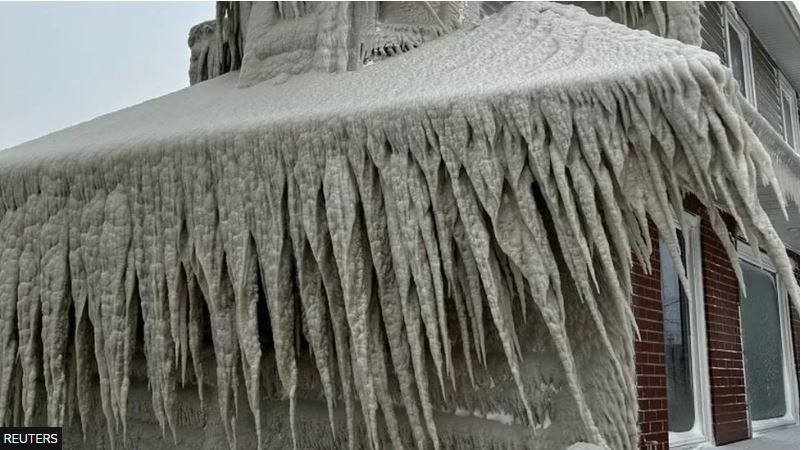More than one million Americans and Canadians are facing Christmas Day without power as a massive winter storm continues to pummel North America.
A bomb cyclone, when atmospheric pressure plummets, has brought snow, strong winds and freezing temperatures.
Nearly 250 million are affected, and at least 19 deaths have been linked to the storm that extends more than 2,000 miles (3,200km) from Quebec to Texas.
Thousands of flights have been cancelled during the festive period.
The western US state of Montana is the worst hit by the cold, with temperatures dropping to -50F (-45C).

Near white-out conditions have been reported in Minnesota, Iowa, Wisconsin and Michigan. In the city of Buffalo, New York state, the US National Weather Service (NWS) reported “zero mile” visibility.
In the Pacific Northwest, some residents ice-skated on frozen streets in Seattle and Portland.
Coastal flooding has been seen in America’s north-eastern New England region, inundating communities and downing power lines.

Even the usually milder southern states of Florida and Georgia are experiencing hard-freeze warnings.
The only region that has largely been spared the cold weather is California where continental mountain ranges are helping to protect the Golden State.
In Canada, the provinces of Ontario and Quebec were bearing the brunt of the Arctic blast.
Much of the rest of the country, from British Columbia to Newfoundland, was under extreme cold and winter storm warnings.
A number of the storm-related fatalities have involved road traffic accidents, including a 50-car pile-up in Ohio that killed four motorists. Another four died in separate crashes in the state.
Travel problems across the country were being exacerbated by a shortage of snowplough operators, with low pay rates being blamed.
The NWS says more than 100 daily cold temperature records could be tied or broken over the next few days.





